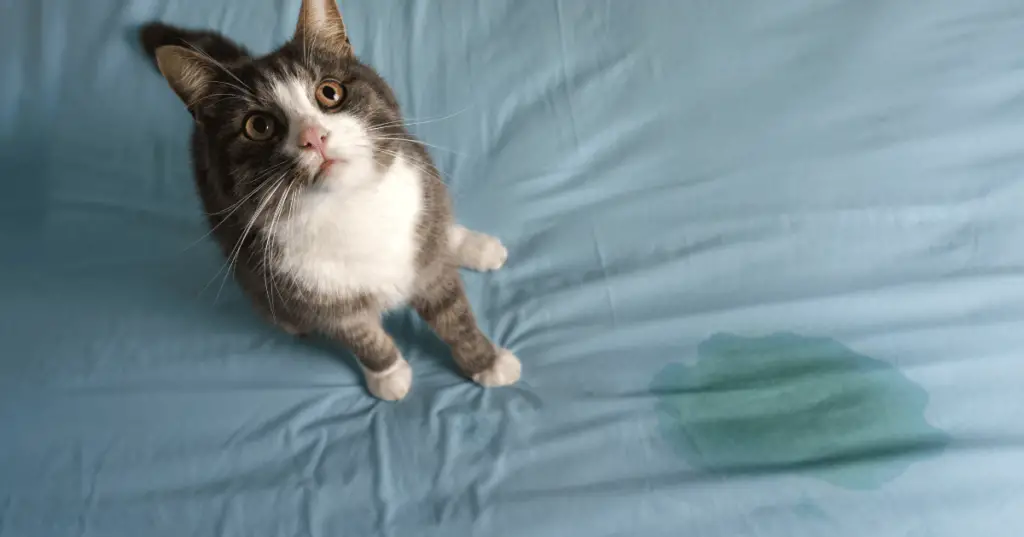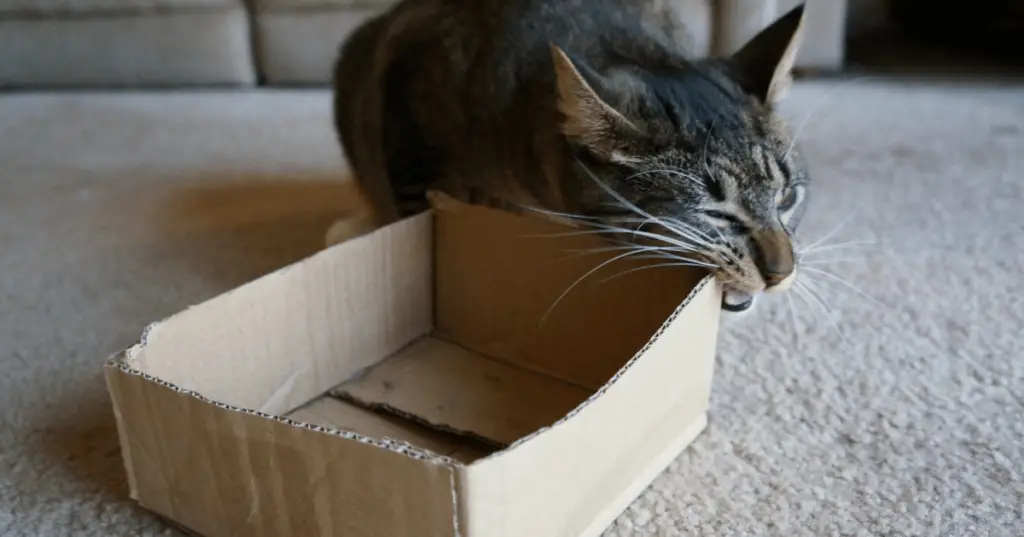Finding your cat using your bed as a restroom can be puzzling and frustrating. But don’t worry; there are reasons for this behavior, and we’re here to help you understand them.
In this article, we’ll explain why your cat might be doing this and what you can do to stop it. Whether it’s a health problem, stress, or issues with the litter box, we’ve got you covered with simple solutions.
Reasons for Cat Peeing on the Bed
Cats peeing on the bed is a common problem and can be quite a hassle. Understanding why they do it is the first step in finding a solution. Here are some common reasons why your cat might be peeing on the bed:
1. Health Issues: One of the primary reasons could be a medical problem. Cats can suffer from urinary tract infections, bladder stones, or other illnesses that make urination painful. When they associate the litter box with pain, they may choose a softer spot, like your bed.
2. Stress and Anxiety: Cats are sensitive creatures, and changes in their environment or routines can stress them out. New pets, new people, or moving to a new place can trigger stress-related urination. Cats may use pee to mark their territory and feel more secure.
3. Litter Box Problems: If the litter box needs to be up to your cat’s standards, they might opt for your bed instead. Common issues include a dirty litter box, an inconvenient location, or a litter type they dislike. Cats are picky about their bathroom habits!
4. Territorial Behavior: Sometimes, cats pee on the bed to establish dominance or show ownership. This is more common in multi-cat households where one cat must mark their territory.
5. Old Age or Incontinence: As cats age, they may lose some control over their bladder, leading to accidents. Certain medical conditions can also cause incontinence.
What Are the Immediate Steps to Take When You Find Cat Pee on the Bed?
Finding cat pee on the bed can be quite a pickle, but don’t fret. We’ve got you covered. Dealing with your cat requires some quick thinking and a dash of know-how.
Stay Cool as a Cucumber: First things first, keep your cool. It’s frustrating, but getting all worked up won’t help. Take a deep breath, and let’s tackle this together.
Isolate the Scene: Remove any sheets or blankets that have been soiled and toss them in the laundry. If the mattress is wet, strip it down, too. We’ll deal with those in a bit.
Blot, Don’t Rub: Now, grab some paper towels or an old cloth and gently blot the area. Avoid rubbing; we don’t want to spread the mess further.
Bring in the Big Guns: Time to tackle that odor. In a solution, combine water and white vinegar in equal parts. Spritz it on the affected area and blot again. Vinegar is excellent at neutralizing those pesky cat pee smells.
Baking Soda Magic: Sprinkle some baking soda over the spot once the vinegar has dried up. This will absorb any moisture and scents that may still be present. Let it sit for 15-20 minutes.
Vacuum, Vacuum, Vacuum: Grab your vacuum cleaner and suck up that baking soda. If the smell persists, repeat the vinegar and baking soda steps.
The Enzyme Cleaner Finale: If all else fails, consider using an enzyme cleaner designed for pet stains. Follow the instructions on the label – it’s like the final boss battle for odors.
Wash and Dry: Throw those bed linens in the wash with a good dose of laundry detergent. Use an enzyme-based laundry cleaner if you have one. Make sure everything is thoroughly dry before putting them back on the bed.
Prevent Future Mishaps: To avoid a repeat performance, make sure your litter box is clean and accessible. A clean litter box is essential since cats can be particular about their potty habits.
Consider a Waterproof Cover: If you’re still worried about future accidents, invest in a waterproof mattress cover. They’re a lifesaver in situations like this.
Behavioral Solutions You Can Try
It can be quite a hassle when your cat decides to use your bed as a toilet. However, there are some straightforward steps you can take to prevent this from happening.
- First and foremost, ensure your cat’s overall health is in tip-top shape. Consult a veterinarian to rule out any underlying health issues in your pet. Sometimes, health problems can be the root cause of this behavior.
- Additionally, maintaining cleanliness is crucial. If your cat has had an accident on your bed, make sure to thoroughly clean the area. Cats have keen noses, and if they still detect the scent of urine, they may repeat the offense.
- Pay careful attention to your cat’s litter box. Ensure it’s kept clean and placed in a quiet, private location. Cats value their privacy when attending to their business. Experiment with different types of litter if your cat appears to be dissatisfied with the current one.
- If you share your home with more than one feline friend, consider providing multiple litter boxes. Cats can be quite particular about sharing their facilities.
- Give your cat a reward or positive reinforcement when using the litter box as intended. Cats appreciate positive reinforcement. Only raise your voice if you catch them using the right spot; this approach is counterproductive.
- Keep your cat engaged with toys and playtime. Sometimes, cats resort to unusual urination places when they’re bored.
- You can also explore specialized products like Feliway or Cat Attract. These can help alleviate stress and anxiety in your cat.
If all else fails, seek advice from an expert. They can offer guidance tailored to your cat’s specific issues.
Conclusion
Addressing a cat’s tendency to pee on the bed requires patience, understanding, and proactive measures. By identifying the underlying reasons and following proper cleaning and behavioral strategies, you can effectively manage, and in most cases, eliminate this troublesome behavior. Remember that seeking professional advice is always an option if needed, ensuring that your home is a clean and comfortable place for you and your cat to live.



